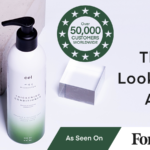What is a wound?
A wound is any break in the skin. A wound will usually heal on its own. Wounds that don’t heal on their own are called hard-to-heal wounds. These require support and advice from a healthcare professional to promote wound healing.
There are various types of hard-to-heal wounds, which can be exacerbated by:
- Pressure over a bony area (can lead to pressure ulcers)
- Injury to the legs of people with poor circulation (arterial or venous ulcers)
- Injury to the feet of patients with diabetes (diabetic foot ulcers), due to poor circulation or loss of feeling
- Surgical wounds that reopen (dehiscence)
In addition, a number of factors may delay wound healing, including:
- Underlying medical conditions, such as diabetes, cardiovascular disease
- Smoking
- Obesity
- Poor nutrition
- Certain treatments, such as chemotherapy
How are wounds treated?
Dressings are used to protect a wound from bacteria and promote wound healing.Keeping a clean dressing on your wound will help it to heal.
Your healthcare professional will recommend specific products to use and tell you when and how to change your dressing.
How can I help my wound heal?
It is important to follow instructions provided from your healthcare professional. You may be given advice to adapt your lifestyle habits, such as:
- Cease smoking and limit alcohol intake
- Eat a well-balanced diet and keep hydrated
- Change your seating position & posture
- Select alternative footwear
- Keep a clean dressing on your wound.
A wide variety of dressings are available which can:
- Protect a wound
- Absorb wound leakage
- Keep it warm and moist (which supports healing)
- Contain antimicrobial properties which kill bacteria that can delay wound healing
When do I need to change my dressing?
All of these dressings can stay in place for up to 7 days however your dressing should be changed as per your healthcare professional’s advice or if it starts to leak.
If you have any of the following signs or symptoms, contact your healthcare professional:
- New or increasing size of wound
- New or spreading redness or swelling of the skin around the wound edge
- New or increasing pain
- New or increase of smell after cleansing of wound
- More wound leakage than normal


Convatec is proud to support the National Pharmacy Association.
For more information on managing your wounds, please speak to your pharmacist, nurse or GP.
© 2022 Convatec. ®/™ indicate trademarks of the Convatec group of companies. AP-56974-GBR-ENG-v1. Date of Prep: September 2022
1. In vitro Performance of Foam Lite ConvaTec WHRI4680 MS132. Data on File. Convatec. 25th April 2016.
2. Walker M, Hobot JA, Newman GR, Bowler PG. Scanning electron microscopic examination of bacterial immobilisation in a carboxymethyl cellulose (AQUACEL) and alginate dressings. Biomaterials. 2003;24(5):883-890. 3. WHRI6850 TA1332. In-vitro Performance Characteristics of AQUACEL® Foam Pro WHRI4536 MS129. Data on File. Convatec. 25th November 2015 4. WHRI6890 TA1356. In-vitro Performance Characteristics of AQUACEL® Foam Pro WHRI4536 MS129. Data on File. Convatec. 25th November 2015 5. WHRI6854 TA1336. In-vitro Performance Characteristics of AQUACEL® Foam Pro WHRI4536 MS129. 25th November 2015 6 In-vitro Performance Characteristics of ConvaMax™, WHRI6045 MS161, Data on file, ConvaTec 7. ConvaMax Superabsorber non adhesive dressing, Information for Use sheet. S12372. Issued 2019-06, Convatec 8. ConvaMax Superabsorber Adhesive dressing, Information for Use sheet. S12373. Issued 2019-06, Convatec 9. Waring MJ, Parsons D. Physico-chemical characterisation of carboxymethylated spun cellulose fibres. Biomaterials. 2001;22:903-912. 10. World Union of Wound Healing Societies (WUWHS) Principles of best practice: Wound exudate and the role of dressings. A consensus document. London: MEP Ltd 2007. 11. Preliminary assessment of the physical properties of AQUACEL™ EXTRA vs AQUACEL™. Scientific Background report. WHRI3461 TA214 Rev.1 2011, Data on file, ConvaTec Inc. 12. Bugedo A, Bowler F, Bishop SM, 2012. Assessment of the in vitro physical properties of AQUACEL™ Ag Extra™ and AQUACEL™ Ag dressings. Technical Assessment. 13. Bishop SM, Walker M, Rogers AA, Chen WYJ. Moisture balance: optimising the wound-dressing interface. J Wound Care. 2003;12:125-128 14. Greguric S, Budimcic D, Reepithelialisation, Soldo BA et al. Hydrocolloid Moist wound-healing dressing versus a environment, conventional dressing using Autolytic magnesium sulphate paste debridement in the management of venous leg ulcers. Acta Dermatovenerol Croat 1994; 2: 65–71.















![BODi-NPA_UK-MPU_Hero-1300×450[14]](jpg/bodi-npa_uk-mpu_hero-1300x45014-1-150x150.jpg)
























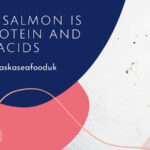
























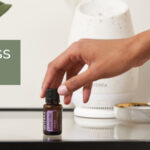












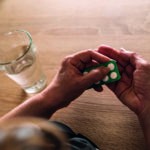












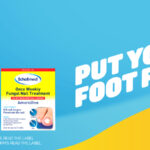
















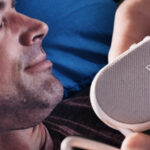

![19150_Diageo NCP MPU Hero_1300x450px[94][42]](png/19150_diageo-ncp-mpu-hero_1300x450px9442-150x150.png)



